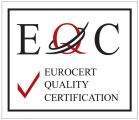2006/42 / EG – CE certification for machines
Directive 2006/42 / EC of the European Parliament and of the Council of May 17, 2006 on machines and amending Directive 95/16 / EC (new version) (in short: Machinery Directive) regulates a uniform level of protection for accident prevention for machines and partly completed machinery Placing on the market within the EEA. In addition, Switzerland has largely adopted the provisions of the Machinery Directive into national law. Turkey has also issued corresponding regulations.
Goals and implementation of the CE marking
The Machinery Directive aims to dismantle non-tariff trade barriers in the Union. The European harmonized law supersedes the individual national regulations for placing machines on the market.
Like all directives issued on the basis of the EC Treaty, the Machinery Directive has no direct effect. It has to be transformed into national law. In Germany, this is done through the Product Safety Act (ProdSG) and the Machinery Ordinance (9th ProdSV) based on it, but the Machinery Ordinance makes reference to Annex I of the Machinery Directive, insofar as the basic health and safety requirements of the European Machinery Directive have a more or less immediate effect . In Austria it is implemented through the Machine Safety Ordinance.
2006/42 / EG – CE certification for machines
Directive 2006/42 / EC of the European Parliament and of the Council of May 17, 2006 on machines and amending Directive 95/16 / EC (new version) (in short: Machinery Directive) regulates a uniform level of protection for accident prevention for machines and partly completed machinery Placing on the market within the EEA. In addition, Switzerland has largely adopted the provisions of the Machinery Directive into national law. Turkey has also issued corresponding regulations.
Goals and implementation of the CE marking
The Machinery Directive aims to dismantle non-tariff trade barriers in the Union. The European harmonized law supersedes the individual national regulations for placing machines on the market.
Like all directives issued on the basis of the EC Treaty, the Machinery Directive has no direct effect. It has to be transformed into national law. In Germany, this is done through the Product Safety Act (ProdSG) and the Machinery Ordinance (9th ProdSV) based on it, but the Machinery Ordinance makes reference to Annex I of the Machinery Directive, insofar as the basic health and safety requirements of the European Machinery Directive have a more or less immediate effect . In Austria it is implemented through the Machine Safety Ordinance.


